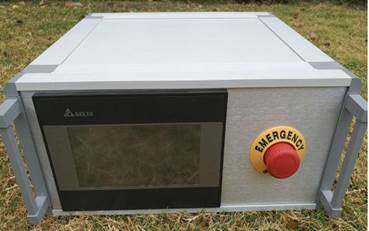Summarize:
EMI-RS Rainfall simulator is the ideal tool for soil infiltration, soil erosion, and other relative filed researches, it can successfully simulate the process and characteristics of natural rainfall simulator. Those include rainfall intensity, raindrop size and distribution, terminal velocity, rainfall energy, spatial distribution of raindrop and validity rainfall area. The simulator should be light enough for transportation and suitable for field conditions. The rainfall simulation process should not be influenced strongly by wind. A curtain should be installed on the wind side to protect the rainfall, but is not included.


The Norton-style simulator has VeeJet nozzles spaced 1.37 m (54 in) apart. With nozzles at 2.5 m (8 ft) height:
A) 2 head unit provides rainfall to a1.5 m wide, 2 m long area
B) 4 head unit provides rainfall to a 1.5 m wide, 4.5 m long area
C)6 head unit provides rainfall to a 1.5m wide, 7m long area.
The reported coefficient of uniformity for the rainfall distribution with VeeJet 80100 nozzles spaced at 1.40 m by 1.52 m grid showed an average of 88.7 with a range between 84.8 and 92.6 from 9 measurements
Reference standards:
The Norton Rainfall Simulator guidelines, listed in this document, are information guidelines supplied by the National Soil Erosion Research Laboratory, United States Department of Agriculture, West Lafayette, Indiana. It is the responsibility, of the people operating the simulator to achieve results based on these guidelines.
Operating environment:
Environmental temperature: 5 to 43.9C (must be above freezing)
Max. Humidity: 90%
The simulator can be used normally at slopes as steep as 20% slope. If slope greater than 20%, it is recommended that the down slope side legs be supported to not exceed the 20% slope.